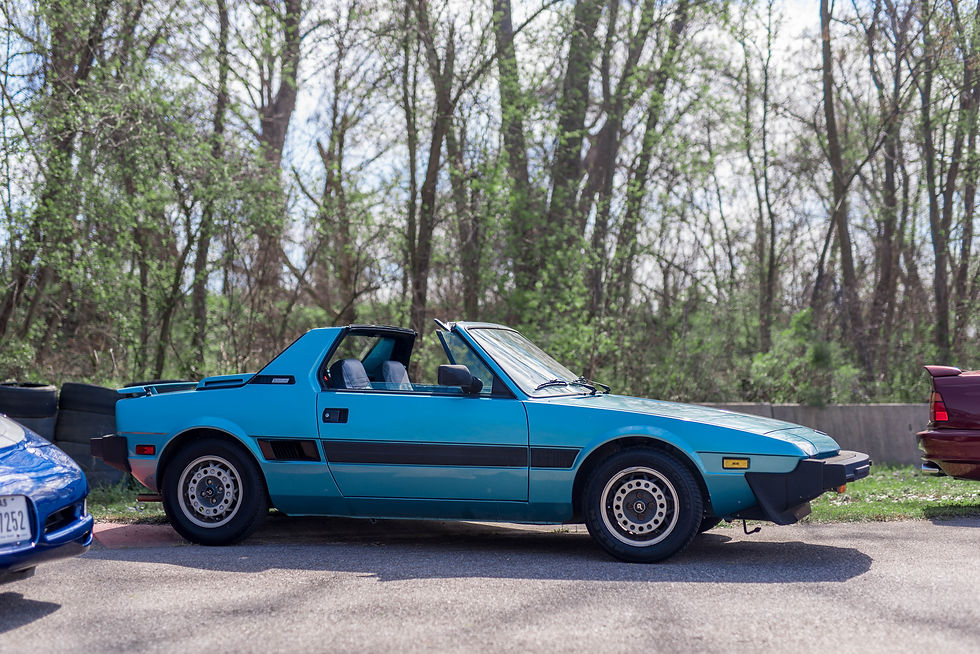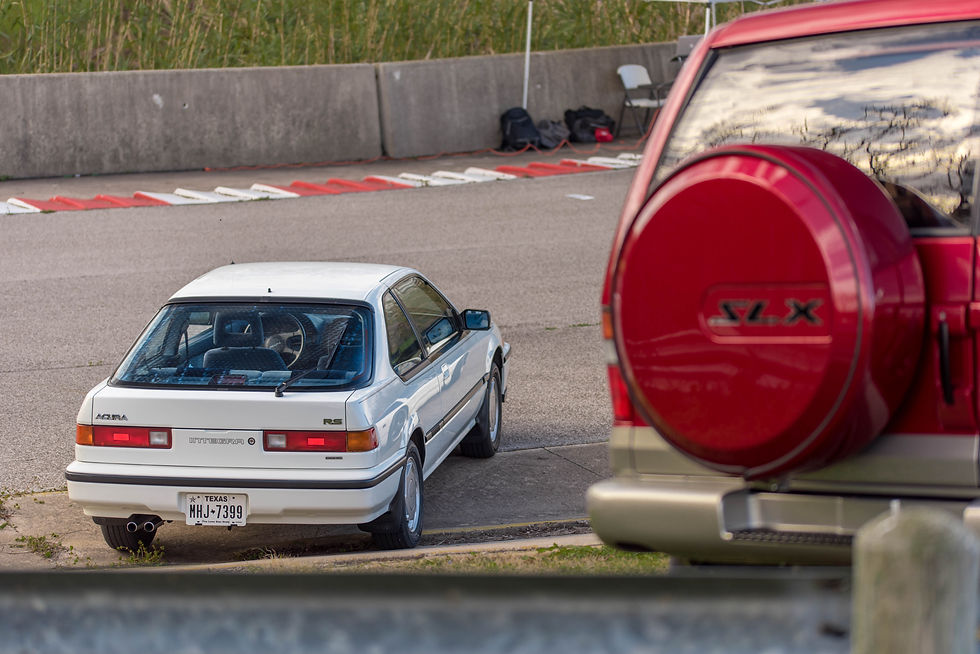Radwood for Millennials
- Victoria Scott

- Mar 15, 2020
- 5 min read
Updated: Aug 1, 2020


I was born in 1995. The first major national event I can recall is 9/11. I was raised on a steady diet of Blink-182 and Eminem. Why am I so excited, then, to attend a self-described celebration of the 80s and 90s, two decades I wasn’t even conscious for?

I rolled out with about a dozen other people to Radwood Austin 2020 from Houston, TX. Not a single one of us is over 30. The average age of our cars is a few years older than the average age of us. What compels us to drive these relatively ancient machines and idolize an era that at best we caught on VHS re-releases and VH1 docudrama “hits of the past”?

Many people who attend era-specific car shows are generally members of the era, and Radwood is certainly not excluded from this phenomena. There were plenty of Gen Xer’s out showing off the cars they dreamt of in their teens in twenties, finally able to attain their ideal cars, and they certainly deserve to be commended for having excellent taste in aspirational vehicles.

This still doesn’t explain, however, why half of the participants are younger than the cars they drove in, usually in some sort of state between “work in progress” and “I literally found this in a barn four states away and I have made it factory new”.

We live in an era defined by two incredibly depressing trends to come of age alongside. One is the invasion of tech as a force for alienation and depersonalization. My life has me staring at a screen for the majority of my day, writing lines of code to help keep the wheels of the modern world turning. In between draining stints sitting at a monitor, pecking out lines of C#, I spend my time on social media, which is at best a parasitic relationship. We give computers our entire lives in the hope of some semblance of social connection that has become increasingly hard to come by without their aid. In exchange, we are packaged and sold as products to multinational corporations that could care less about us as individuals, and we have absolutely no choice in the matter, because the promise of the open, free Web broke down to a couple of massive internet monopolies which are nearly unavoidable for all but the most tech-disgusted. Whether we feel this on a daily basis or not, it is implicitly accepted by us to simply exist in the modern world, and it becomes grating.

The other broad arc of our era is the death of the middle class and social mobility. We went to college, we got our degrees, we took on our crippling debt, and in exchange, we earn less money than the generations before us. A single serious illness or major car repair is generally all that separates us from our freedom to live our lives as we see fit and sleeping on someone else’s couch, and even then, that sometimes requires two jobs.

As a result, the car market has mirrored our world, and pivoted to two trends that we all hate and are powerless to stop. Massive screens, mandatory backup cameras, Apple Carplay and Android Auto dominate feature lists. With older people with different priorities than us dictating the supply of new cars, tall crossovers with ample family hauling room, easy ingress and exit paths, and generally numb handling rule the market, because the generation with money desires them. If you somehow happen to have New Car Money and want an affordable sports car with a warranty, you have the GT86, Miata, Mustang Ecoboost, and Genesis Coupe, as well as some assorted Chevy and Mopar V6s that really no one wants.

Our generation, disillusioned, aware that our pitiful purchasing power buys us nothing but 2-day shipping toilet paper rolls, looks to the past. The 80s and 90s were not perfect decades. I would have been fired from most jobs for being queer, crack cocaine and the War On Drugs was in full swing and decimating minority communities, and Reaganomics began us on the downward slide of “trickle-down” corporate dissection of people’s humanity that we currently are in the throes of, but at the very least, there was hope. Technology was a bright new field. Computers promised a life of leisure and automation and instant information, for the betterment of mankind. Younger generations still possessed buying power. And we were catered to.

As a result, we dictated market forces in the car industry like arguably no other time in the history of the automobile.

Every manufacturer that wanted a prayer of competing for the youth dollar needed a sporty vehicle capable of turning heads and attracting paychecks.

Entire brands were built around the concept of building sports cars that, while expensive, were nowhere near the stratospheric billionaires’ club of modern hypercar pricing, and at least promised that someday, you might have one of these.

SUVs weren’t a commodity vehicle, designed to make the buyer feel like the king of the road - they actually needed to perform as trailrunners and off-roaders suitable for a weekend out roughing it, and creature comforts came as a bonus with locking hub 4WD systems and ultra-low gear ratios.

Tech, when used, was not an intrusive smartphone-syncing device that somehow still frustratingly manages to not work - it was a neat trick, a “how did they do that” feature, one that still held magic. It had not become Some Bullshit I Gotta Deal With yet - it was a fantastic addition and an impressive display of engineering to wow customers at the dealership and your friends when you’d taken delivery.

Even the relatively mundane offerings had become tarted up to ensure that in this wealth of options, there was a compelling case to be made for choosing this specific vehicle.

We look back to now. Somehow, these incredibly diverse, fascinating, and (hopefully) easy to maintain vehicles, devoid of OBDII, dual injector setups, increasingly labyrinthian emissions setups, and complicated ECU tech have reached or or near the nadir of their value.

Nothing here (with a few notable exceptions, of course) is quite worth spending an obscene amount of money to preserve yet. There are generally still enough around in mediocre shape to keep average purchase costs down and make modifications tempting.

And so, as we job-hop aimlessly through the increasingly bleak landscape of modern life, we find our respite in the cars of days gone. Yes, they do break a lot. Parts are harder to find than we wish. There is struggling and pain involved, without a doubt.

But there is progress and we can attain it and in a world that seems intent on making that impossible, it counts for a lot.

And so we end up at Radwood. Where “I paid $300 for this and I barely finished the break-in period before I had to drive down for the event” is a badge of honor.

People dress in clothes they got from thrift shops that outdate them just to recapture some of the feeling of the era. It’s a cosplay convention for two decades that just seemed a little brighter, and we will preserve that light for as long as we can through our machines and ourselves.





Comments